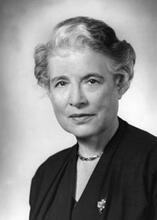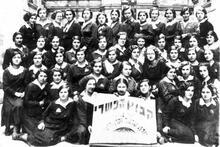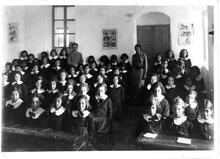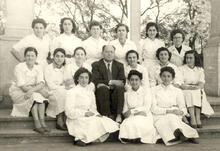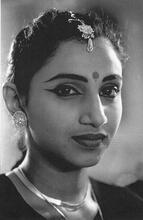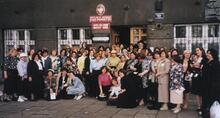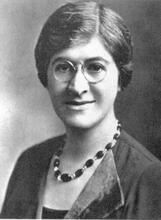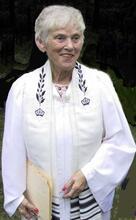Mexico: Education
The first immigrants to arrive in Mexico in the early twentieth century from Eastern Europe, Syria, and the Balkans were profoundly concerned with the formal education of their children. At that time, part of the controversy in the community was whether Mexico should be an “in transit” country to the United States or a place in which to settle permanently, in which education would play an important role as part of the socializing process. Over the years, the different communities opened schools for girls, including secular, modern Orthodox, and Orthodox schools. While most Jewish schools are in Mexico City, smaller Jewish communities have also opened co-educational schools. Jewish schools today remain a reflection of the ethnic, geographic, religious, and ideological characteristics that distinguish of the sectors comprising the Mexican Jewish community.
Establishment of the First Jewish Schools
The first Jewish immigrants to arrive in Mexico during the early decades of the twentieth century from Eastern Europe, Syria, and the Balkan countries were profoundly concerned with the formal education of their children. At that time, part of the controversy in the community was whether Mexico should be an “in transit” country to the United States or a place in which to settle permanently, in which education would play an important role as part of the socializing process. Another topic in this debate was what kind of schools would most help their children in adapting to their new environment, by teaching language skills and native traditions as part of an integration process, while nevertheless avoiding assimilation. At the same time there was a need for a Jewish education system that would allow preservation and reproduction of the cultural and religious heritage.
Initially, the debate centered around which was preferable: a modern, secular Jewish school with a nationalist emphasis, which would include Yiddish culture and Zionism, or a traditional Lit. "room." Old-style Jewish elementary school.heder or K’tav providing religious education in Hebrew, Yiddish, or Arabic.
In 1917, parents with a religious orientation established K’tav, a traditional boys’ school, at the Comunidad Monte Sinai, founded by Mizrahi Jews from Syria. The first Ees Haim Lit. "study of Torah," but also the name for organizations that established religious schools, and later the specific school systems themselves, including the network of afternoon Hebrew schools in early 20th c. U.S.Talmud Torah, founded between 1920 and 1927, was incorporated into the official Public Educational Office framework in 1924. The Hatiha Talmud Torah was founded by the same community between 1933 and 1942 and modernized in 1939 by admitting girls into the institution and using Spanish instead of Arabic.
In the Ashkenazi community, the first Talmud Torah was established in 1922, followed by other Talmudei Torah until the mid-1980s. From 1936 on, the Yavne Talmud Torah existed intermittently, becoming the Escuela Yavne in 1942, with a national-traditional education in the study of religious and secular subjects. When the middle school was founded in 1949, parents were invited to let their children attend an Orthodox school where they would learn Talmud, the Pentateuch, the Prophets, and Jewish history. At the same time, schooling was opened to girls. At present, the Escuela Yavne includes boys and girls in the same classroom at all levels, with an Orthodox curriculum.
In 1945 an academy was established in the Comunidad Maguen David, founded by immigrants from Aleppo, Syria, in 1939, providing evening classes in Hebrew and religious studies. From the opening of its first school in the 1950s, Sedaka Umarpe (1953-1971), an organization created by Jews from Aleppo prior to the formal establishment of their community, was involved in a battle related to radical and moderate religious positions that resulted in the creation of several schools.
Instituto Bet Yaacov
The idea of establishing a girls’ school inside the Comunidad Maguen David first emerged in 1973 when Rabbi David Masri, following the educational principles of Sarah Schenirer, founded the Instituto Bet Yaacov. He maintained that women’s roles had been neglected for too long and that their capacity for learning was underestimated. Since, as mothers, women had a profound influence on their children, it was necessary to ensure the effective transmission of Jewish knowledge by educating girls.
At present, the Escuela Bet Yaacov includes all levels up to middle school, as well as teacher training. Since there is no high school, students cannot enter college. One of the main reasons given for this is that “it is a risk for teenagers to abandon their orthodox community. If a student obtains a degree, she feels free to do whatever she likes.” Since a high percentage of students marry young, at the age of sixteen or seventeen, they should know everything related to shemirat SabbathShabbat (keeping the Sabbath, taharat ha-mishpahah (the laws of family purity) and The Jewish dietary laws delineating the permissible types of food and methods of their preparation.kashrut . The school uses the Israeli curriculum: subjects include Hebrew grammar and literature, Bible, laws and tradition, and Jewish history. Most of the teachers come from Israel or Argentina.
Keter Tora
The Escuela Keter Tora derived from the Askenazi Yeshiva Educacion y Cultura. Founded by Rabbi Abraham Hershberg in the early 1960s, it survived for fifteen years. Boys and girls studied together from kindergarten to the second grade, but thereafter in separate classes. The Escuela included a middle school and a teacher training institution. Since children from Orthodox Sephardi families did not have any other place to study, they integrated into this yeshiva. When the school closed its doors, some students transferred to the Yeshiva Keter Tora while others registered at yeshivas in New York, Baltimore, and other North American cities. Some of the girls attended the Bet Yaacov school in New York.
In 1979 the Yeshiva Keter Tora opened a school for girls with the objective of giving them an Orthodox Jewish education. In kindergarten boys and girls were together, while in elementary and middle school boys and girls were separated in all activities, even during breaks and on the school bus. This school included a technical middle school linked to the Office of Public Education and a high school. Students followed the official educational program, while at the same time taking the teacher-training course. Since the first class graduated in 1988, alumni have served as kindergarten and elementary school teachers in this and other orthodox schools. Only more experienced staff may teach middle school pupils.
No female graduate from the Yeshiva Keter Tora has ever gone to college, both because higher education for women is not accepted by the community and because they marry at a very young age, some even before finishing high school. Recently, some have registered at the Universidad Hebraica, which reached an agreement with the school enabling students to obtain a bachelor’s degree in education or pedagogy.
In 1979 the Seminar Lemorot (Women Teachers’ Seminary) of the Comunidad Magen David was founded by Rabbi David Masri to enable young women to teach Jewish studies in Jewish schools in Mexico. As a requirement, they must have a middle school certificate. A high-school certificate is valued, but not essential. The students are trained to teach in kindergarten and elementary school, but only teachers with more experience can teach in middle school.
Orthodox and Modern Orthodox Schools
Or Hajaim School, founded in 1999–2000, includes a kindergarten and an elementary school at which boys and girls study together until the fifth grade, after which they separate. This is an Orthodox school that shows greater leniency within halakhah (Jewish law) than the religiously stricter Keter Tora and Bet Yaacov schools. The school has established high academic standards also for secular studies and has established broader curricula regarding Israel and non-religious subjects.
In 1985 the Orthodox Emunah School was established, comprising kindergarten, elementary, middle and high school. In kindergarten, boys and girls are in coeducational groups, but they separate in elementary school. The school educates its pupils in the precepts required for Jewish men and women to lead a life of Torah im derekh erez (religious practice combined with general culture and worldly involvement, according to the principles of Rabbi Samson Raphael Hirsch [1808–1888]) no matter in which environment they choose to live: yeshiva, college, business world, or professional life. It inculcates an Orthodox way of life together with a sense of responsibility and total identification with the Jewish people and its history, with Israel as the center. Though some of the students come from non-Orthodox households, they integrate successfully with the school’s Jewish traditions and rules. This institution is unique in that both male and female students are free to continue to college education.
In 2004 Derej Emes Institute was established as another Orthodox option for children of Ashkenazi descent under the same ideological principals of the Emunah School.
Non-Orthodox Education
Parents who were not interested in the Orthodox option enrolled their daughters and sons in public or private schools. Some girls attended Catholic schools for girls because they offered vocational training as secretaries, in accounting, and in English, as well as basic education. Later, these women would join their families’ small businesses. In the early years of immigration, it was customary for girls of the Comunidad Monte Sinai to attend Catholic schools. Parents would request that their daughters be exempted from prayer services and catechism. On completing their elementary education, most of the girls remained at home doing household chores; some took courses in dressmaking or English or secretarial skills. Since they all married at an early age and became homemakers, only a few attended middle school, high school, or college.
Secular Jewish education began in 1924 with the opening of the Colegio Israelita de Mexico in Mexico City. Secular Jewish schools are private and co-educational. They teach the official national curriculum as well as a Jewish studies program, from kindergarten to high school.
During the 1940s a proliferation of secular, Zionist, and Hebrew Jewish schools led to the establishment of the Colegio Hebreo Tarbut, the first institution to incorporate students from all communities, which was soon followed by Colegio Hebreo Monte Sinai (1943) and Colegio Hebreo Sefaradi (1944). In 1949 the Nuevo Colegio Israelita was founded, with a Yiddish emphasis. Since the 1960s, the Yiddish schools have adopted a Zionist and Israeli emphasis, stressing Hebrew as a language. The Colegio Maguen David, founded in 1978, is traditional and Israel-oriented, with an emphasis on Hebrew. Bet Hayeladim (1974), a Montessori school, includes kindergarten and elementary school. The Colegio Atid, founded in 1995, provides for pre-school and elementary education, with a stress on the English language.
Outside Mexico City
Jewish communities outside Mexico City also established their own co-educational schools. In 1932 the city of Monterrey, in the state of Nuevo Leon, opened a supplementary (afternoon) Jewish school, Colegio Israelita Hatikva, which by 1935 had become a school providing for the educational needs of the entire community. In 1951 the Colegio Israelita de Guadalajara was founded in the city of that name. Because of the large emigration of young couples from Guadalajara and Monterrey in recent years, both Jewish schools now welcome non-Jewish students in order to be able to operate.
The Contemporary Situation
At present, Jewish schools are still a reflection of the ethnic, geographic, religious, and ideological characteristics that distinguish each of the sectors comprising the Mexican Jewish community. The entire Jewish educational system lies under the umbrella of the Vaad ha Jinuj, a non-profit institution founded in 1942 that seeks to establish an ongoing dialogue between all Jewish schools regarding academics and both formal and informal educational projects, such as sports and cultural events. Since 2018 the Jewish Sports Center is represented along with the rest of the Jewish schools.
In recent years three new pre-schools (unaffiliated with any community of the Vaad ha Jinuj) have been created: Gan Montessori (2007); Or Sameaj (2016), a religious Montessori pre-school; and Merkaz (2016) a bilingual Hebrew and Spanish Montessori pre-school. The Kadima school was established in 1997 for children and adults with disabilities.
The vast majority of non-Orthodox men and women of all communities now attend universities. Fewer women outside the Orthodox communities follow the traditional pattern of becoming teachers or technicians. Everybody—both male and female—has the same rights and obligations regarding their education.
Bayon, Leib. “La educación judía en México.” In Moisés Rosenberg 1904–1942. Una vida dedicada al periodismo, edited by Esther de Schuster. México: 2001.
Finkelman de Sommer, Maty. “Instruye a tus hijos.” In Generaciones judías en México. Kehila Ashkenazi (1922–1992), edited by Alice G. Backal. México: Comunidad Ashkenazí de México,1993.
Halabe, Liz Hamui de. Los judíos de Alepo en México. México: Maguén David, 1989.
Smeke Darwich, Jacobo (dir.). Historia de una Alianza. México: Alianza Monte Sinaí, 1999.
Shabot, Rab. Abraham. Interview with Frida Staropolsky-Shwartz. México D.F., August 27, 2002.
Keter Torah teachers. Interview with Frida Staropolsky-Shwartz. México D.F., July 12–16, August 26, 2002.
Emuna teachers. Interview with Frida Staropolsky-Shwartz. México D.F., July 25, 29 August 8, 2002.
Or Hajaim teachers. Interview with Frida Staropolsky-Shwartz. México D.F., August 7–8, 2002.
Vaad ha Jinuj information material, Mexico, 2019.
Zadoff, Efraim. “Un análisis comparativo de las redes educativas judías de México y Argentina, 1935–1955.” In Judaica Latinoamericana. Jerusalem: Editorial Universitaria Magnes,
1988.

